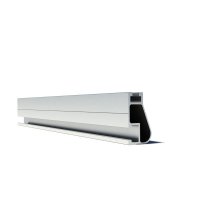
-
Maximize attachments spans (6 ft.) on residential solar installations. This can save you money on flashings and labor on installations. The IronRidge Design Assistant allows you to strike the right balance between structural stability of attachments and cost savings on racking, usually about 6 foot spacing between flashings. Also if you live in a more temperate climate, using thinner rail such as the XR-10 in states like California or Texas provides material savings for a residential project.
-
Routinely check in with your Account Manager to ask what the best-valued module is. For example, if the homeowner does not care for a black frame 60-cell on their modules, 72-cell silver-framed modules can sometimes shave down costs for residential systems.
-
Order modules by partial or full truckload to reduce shipping costs.
-
Remember that your customers are your partners and advocates! An advantage small and medium solar installers have over their national competitors is an opportunity to realize substantially lower customer acquisition costs. A referral or "advocate" program can be a great way to find new leads at a cost well below the national average. By offering current customers referral incentives and marketing collateral to share with their friends and family, independent solar contractors can leverage community ties to find new opportunities without raising installation costs. Spending the time to ensure your customers are educated about their system and can tell their own story of “going solar” will allow them to be one of your greatest assets and an extension of your sales force, by simply being a proud champion of their investment.
-
Use online design tools to reduce physical site visits when possible. Your Account Manager will be happy to provide assistance or design services to help you close projects! Great initial proposal tools can eliminate time-intensive second visits to job sites.
-
SMA string inverters are the current residential cost leader. They recently purchased a majority share of Tigo Energy and released their Power+ Solution for panel-level optimization. String inverter prices have declined significantly in the past five years and will continue to do so. In his 2017 industry report, GTM Research analyst Scott Moskowitz wrote, “inverter prices show no sign of stabilizing, current technology trends have not exhausted their cost-reduction potential, and many markets are still extremely fragmented.”
-
Reduce balance of system (BOS) costs through conscious and deliberate wire sizing. For example, by using #12 gauge instead of #10 gauge wire you can lower your BOS cost significantly.
-
Sell a power class, not a brand, on your proposal. When availability for certain brands becomes tight, the flexibility to pivot to a similar brand with equal power and quality within that power class can provide extra margin and deliver the same value.
-
Pay for your equipment with cash to avoid credit card or finance fees. The surest way to avoid fees is to pay the prepaid cash price, this will usually save you at least 1% of the total purchase price. Schedule your payments from customers to be more in line with your own purchases to help with your cash flow.
-
Ask your Greentech Renewables Account Manager about the our current promotions as well as direct manufacturer promotions. Earlier this year, Greentech Renewables offered free flashings with your purchase of JinkoSolar modules and Ironridge racking equipment. When you bundle equipment by ordering together, you can take advantage of additional savings sponsored by your distributor or product manufacturer.

Comments
Good stuff!